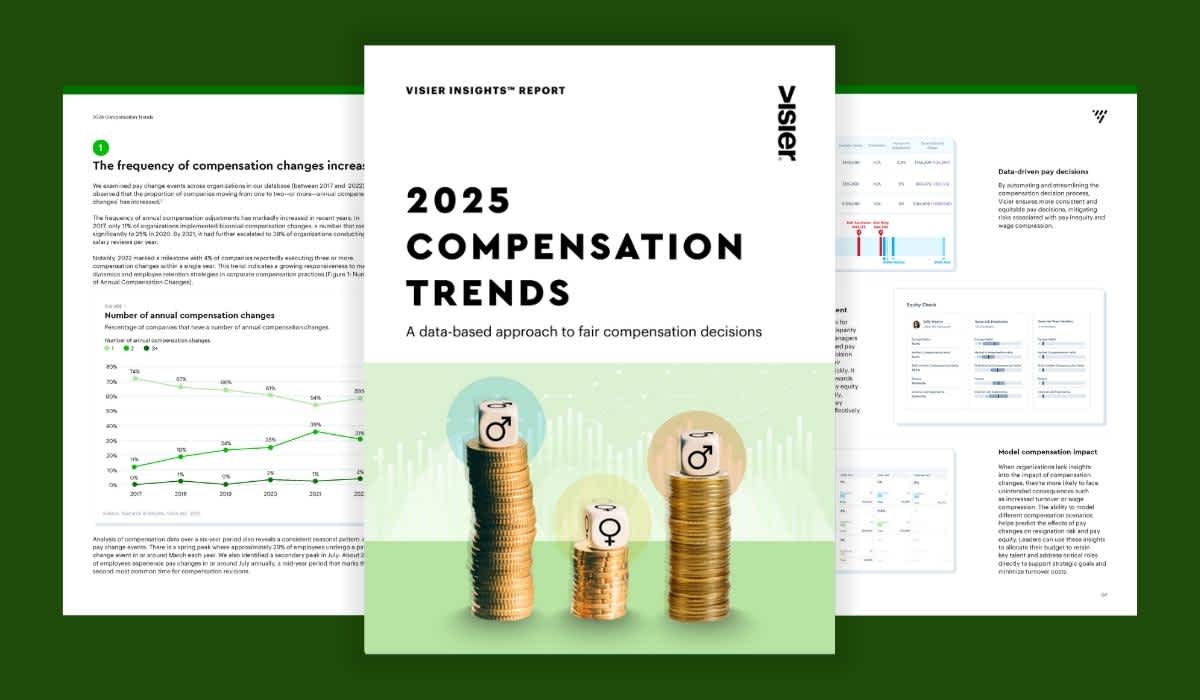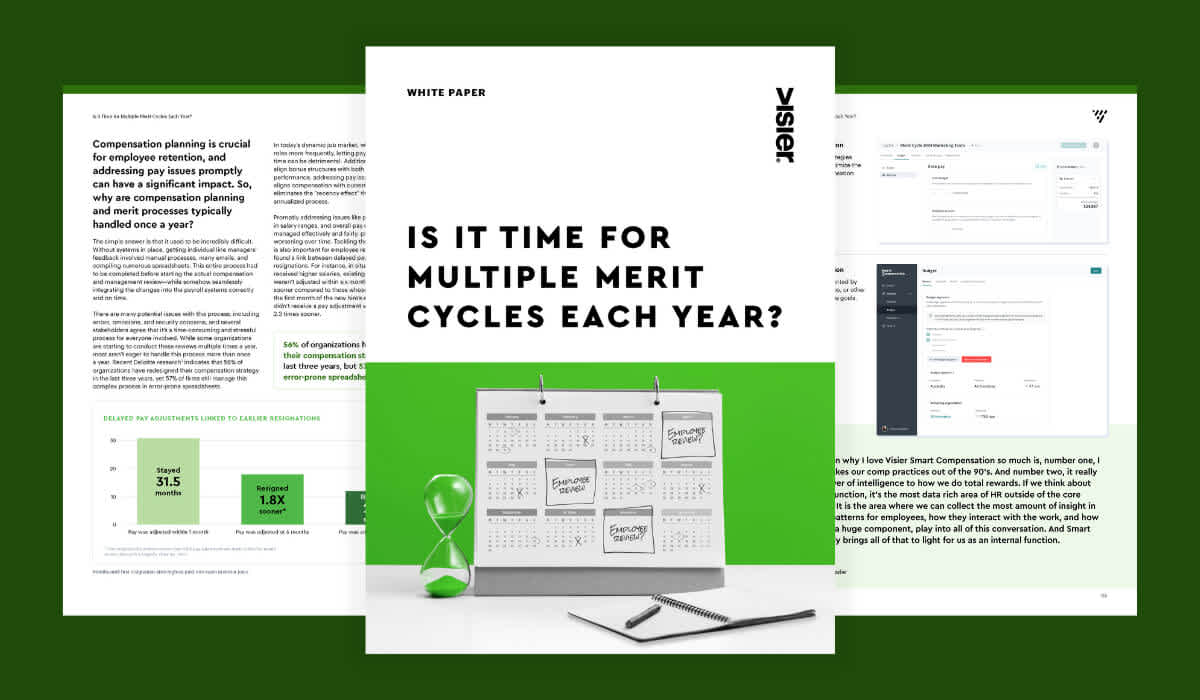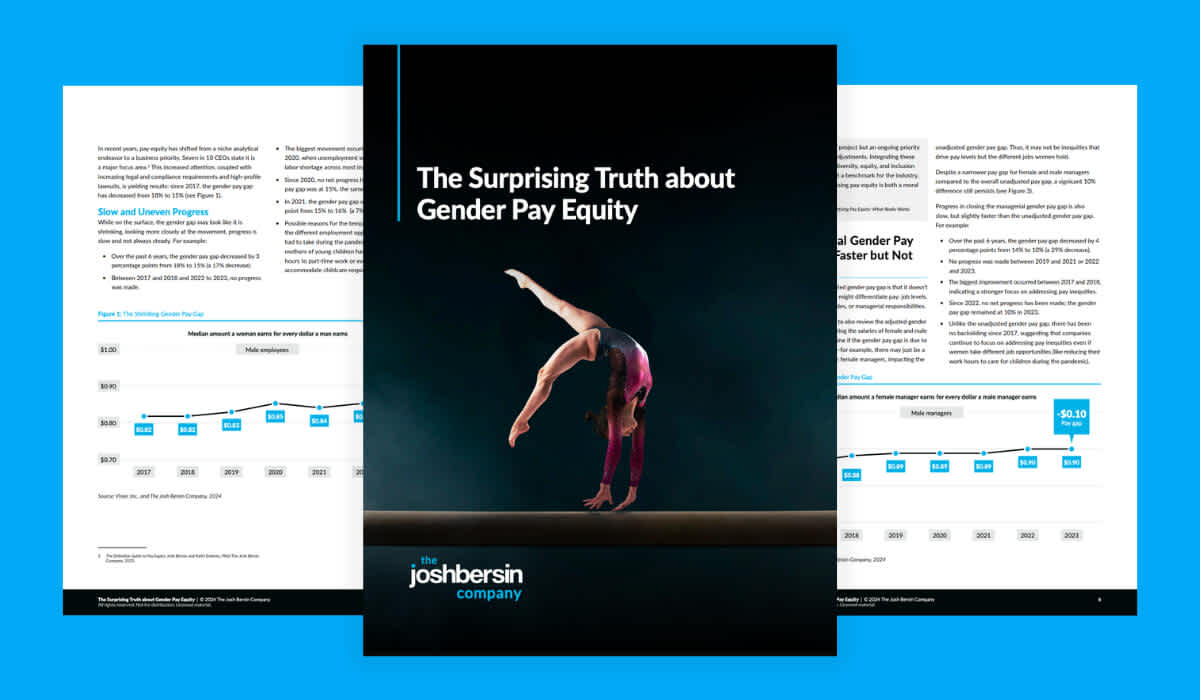The EU Pay Transparency Directive: A Guide for Data-Driven Enterprise HR Leaders
The EU Pay Transparency Directive is designed to ensure equal pay, fairness, and transparency. Learn more about the new reporting requirements and how to prepare in four steps.

Imagine you mistakenly receive a payslip that reveals your colleague earns 13% more than you, despite having the same job, qualifications, and experience. How would this make you feel? Would you be upset? Would you request a raise and retroactive pay? And after these adjustments, could you still trust your employer on matters of compensation?
According to Eurostat and the Office of National Statistics (ONS), the gender pay gap in the EU was 12.1% as of 2022. It's a common issue in today's workplace: people should receive equal pay for equal work, a basic principle of fairness. But often, they don’t. And it can be difficult for an employee to raise this issue due to potential career repercussions. The EU Pay Transparency Directive aims to tackle this issue and ensure fair compensation for all.

What is the EU Pay Transparency Directive?
That’s where the new Pay Transparency Directive comes in: it requires employers to provide clear and accessible information regarding pay and compensation, with an emphasis on equal pay for work of equal value. The directive aims to address wage disparities, particularly those based on gender, and ensure that compensation is both fair and transparent across all EU member states.
Under this directive, employers are required to:
Provide pay information (salary bands) to job seekers.
Maintain transparency regarding career and compensation details.
Regularly report on the gender pay gap.
Conduct a joint pay assessment in cases where gender pay gaps exceed 5%.
Additionally, employees have the right to request information about pay levels. Employers who fail to address pay disparities may face penalties, including back pay and fines.
While you might see this as yet another directive, I encourage you to look at it from a different perspective: it’s the right thing to do for an employer of choice!
Why is it important to stay competitive in the talent market?
Whenever I speak about the Future of Work, I point to two global trends that significantly influence a company’s ability to execute its strategy: demographics and skills. As we navigate these changes, companies that embrace pay transparency are likely to gain a competitive edge.
Demographic shifts: Decline of Boomers and rise of GenZ
In this decade, the workforce in the Global North will undergo significant changes as the so-called Baby Boomers retire. They will be succeeded by GenZ, a far smaller cohort. But also, a group that has grown up fully immersed in the digital age, used to instant access to information. These new workers have distinct expectations of their work environments, prioritizing transparency and equality. Their unique perspectives and digital savvy will reshape workplace cultures and operational norms. If you want to attract this emergent workforce, now is the time to adapt your policies and practices to engage and retain them.
Skilled labor shortages
As a result of this demographic shift and the rapid advancement of new technologies, industries are facing skilled labor shortages. In the EU, 77% of companies report difficulty finding workers with the right skills. Adopting transparent pay practices can set you apart from competitors and make your company a more appealing choice for job seekers. This approach not only helps in recruiting but also in retaining talent who value clarity and fairness in their employment conditions.
Changing regulatory landscape
The EU Pay Transparency Directive is part of a broader trend towards increased corporate accountability and transparency, with an increased focus on Environmental, Social, and Governance (ESG) criteria. The Corporate Sustainability Reporting Directive (CSRD) has significant implications for workforce policies. Pay transparency is increasingly seen as a key component of good corporate governance and social responsibility. By proactively addressing these topics, companies can position themselves as ahead of the curve. It’s not merely about compliance; it demonstrates leadership which enhances reputation and trust.

How to prepare for the EU Pay Transparency Directive in four steps
The most important advice I can give you is don’t wait! You have only two pay cycles left to address any potential pay disparities. If you're uncertain about the size of the pay gap, how can you allocate enough budget for remediation?
Start by determining where your pay data is located. Keep in mind that the Directive requires you to report on two sets of gaps: salary and total compensation. Salary data is typically found in your payroll system, but total compensation data may be scattered across several systems and needs to be consolidated. While you work on this, start by analyzing your salary data even if it’s incomplete. This will help you to become familiar with the reporting results and reveal potential causes of pay gaps.
1. Identify
Review the job architecture: Define what constitutes equal work within your organization. Establish clear job descriptions and classifications to ensure roles with similar responsibilities and requirements are grouped together. This foundational step is crucial for accurately assessing and comparing compensation across different positions.
Audit existing pay structures: Conduct a comprehensive audit of current pay practices and develop a compensation framework if you don’t yet have one. Can you explain why you pay what you pay based on fact-based criteria like education and experience? Identify any disparities that may exist and understand the underlying factors contributing to these issues.
Benchmark Against Industry Standards (Optionally): Compare your company’s compensation packages against those in your industry. This helps in understanding competitive salaries and the transparency levels expected by top talent.
2. Analyze
Even if your HR and payroll solution contains all your compensation data, it probably lacks the advanced people analytics capabilities needed to analyze this data, identify the root causes of pay gaps, and help you address them. That's why it's crucial to select a robust people analytics tool. It should offer detailed people data analysis, enabling you to uncover and understand pay disparities accurately and efficiently.
Select your analytics tool: Choose a people analytics tool that can securely and effectively handle your compensation data. Look for features that allow for deep dives into pay structures and trends, and ensure it supports compliance with your organizational needs and regulatory requirements.
Conduct a pay audit: Perform a detailed analysis of your compensation data to uncover any inconsistencies or biases in pay across similar roles. This audit should involve reviewing all compensation elements to ensure that employees performing similar work under similar conditions are paid equitably. Make sure protected characteristics (gender, beliefs, cultural background, etc) play no role in setting compensation. This step is essential for identifying and correcting pay disparities.
3. Explain
Compensation is a highly sensitive topic. Changes in pay are not just numbers on a sheet; they deeply influence employees' feelings of value and fairness at work. That's why I always stress that the success of a pay transparency initiative depends on effective communication. And this communication starts at the top, not as an HR initiative!
Team leaders will be responsible for communicating compensation details to employees. Reserve enough training time to ensure they consistently convey the same message. By clearly explaining the reasons and methods behind pay adjustments, these leaders can maintain trust and prevent dissatisfaction, ensuring that the workplace remains a supportive and transparent environment.
Develop clear compensation overviews: Create and implement clear, easy to understand compensation policies that outline how pay levels are determined. This includes tangible factors like experience, performance, and qualifications.
Train your leaders: Educate your leaders on how to effectively communicate the compensation policies to their teams. This training should also cover how to address employees' questions and concerns about pay, fostering an open dialogue that emphasizes fairness and transparency (a key requirement to retain your youngest employees).
Ensure Accessibility of information: Make career and compensation information easily accessible to all employees. Encourage them to engage in compensation conversations. Transparency is key to building trust and ensuring that all employees feel valued and fairly treated.
4. Remediate
Every company has pay gaps, so don't be discouraged if your initial report reveals them! That’s exactly the purpose. The important thing is that you reduce them to under 5%. Maybe your company has the budget to correct all these gaps at once. Most likely you need two (or more) cycles to close the gap. Be aware that once you identify pay gaps, you cannot allow them to continue without addressing them, as this might create a legal liability.
Address discrepancies: Where discrepancies in pay are found, especially those that cannot be justified by objective criteria, establish a plan to remediate these disparities. Communicate the remediation plan with all employees and share details only with the employees involved.
Continuous monitoring and updating: The pay gap isn’t static. It changes as employees leave or join your workforce. That’s why you must regularly review the pay gap. I suggest once every three months in the beginning. You’ll probably find that you need to re-educate (team) leaders to apply compensation strategies evenly. Over time, as people become more experienced, once every six months will be enough to ensure you’re on track.
Key takeaways
By now, you've probably noticed the two key requirements for a successful pay transparency initiative. First, it's crucial to aggregate fragmented payroll and compensation data. This involves consolidating information from various systems into a single, cohesive source of truth to ensure accuracy and ease of access. Second, building a robust analytics approach for continuous compliance is essential. This means developing the capacity to regularly analyze and interpret compensation data, enabling ongoing adherence to pay transparency standards and regulations. These steps are foundational in establishing a transparent and equitable compensation system within your organization.
The EU Pay Transparency Directive is more than a regulatory requirement—it is an opportunity to attract the modern workforce by embracing transparency. This can enhance your company's attractiveness to ambitious, highly skilled professionals (of all levels) who will be the driving force of tomorrow’s economy. By acting now, your company not only complies with new regulations. You also position your company as a fair, equitable, and forward-thinking workplace. It’s an opportunity to not just meet but exceed these transparency standards and to be the employer of choice for a robust, competitive, and diverse workforce.



